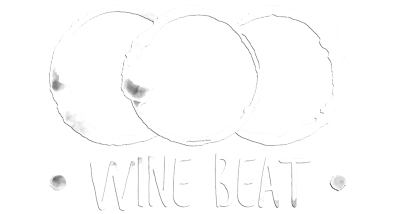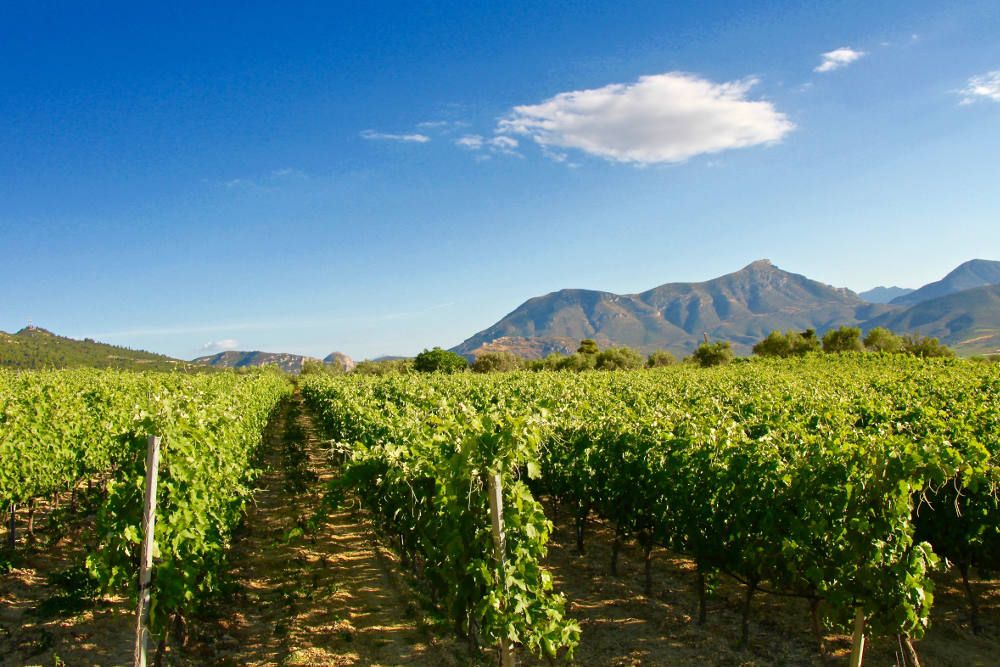 This Nemea vineyard is at Giannis Tselepos’ Ktima Driopi estate.
This Nemea vineyard is at Giannis Tselepos’ Ktima Driopi estate.
Nemea is home to the Agiorgitiko (aye-or-GHEE-tee-ko) grape and, just as Naoussa in the north is synonymous with Xinomavro (see our article), Nemea is closely associated with the powerful Agiorgitiko grape. The origins of the Agiorgitiko variety are mysterious. It is generally believed to come from this area but the genetics are uncertain. Fittingly, there is just as much Greek legend as there is fact associated with the origins of this storied wine. The myth goes that the region was terrorized by the Nemean Lion, a beast that could not be slain by any mortal. Hercules, a demi-God born of Zeus and a mortal mother, was travelling in the area and took up the challenge to kill the lion. Ultimately he strangled the beast when he found that weapons would not harm it. To round out the legend (since wine often played a role in Greek myths), Hercules was reportedly drinking the local wine either before his battle with the lion or after. Ever since, the wine has had the nickname the “Blood of Hercules”. In literal terms, the name translates to Saint George and so Christian lore plays a role as well. In any event, it is a wine with deep history and is believed to have been a favourite of King Agamemnon during the time of the Trojan War.
Join Us On The Wine Beat For A Tour Of Greece’s Other Great Red Wine Region – Naoussa!
Agiorgitiko wine can qualify for the Nemea Protected Designation of Origin if it is made from 100% Agriorgitiko grapes. Despite the single PDO, there are in fact quite different terroirs given the significant topographical variations in this mountainous area and Nemea is often considered to have three general zones: the flat lowlands near the village of Nemea, mid-altitude hills to the west, and the higher elevation areas toward Mount Kyllini in the north. Some vineyards are located at altitudes higher than 900m and this creates a wide diversity in wine expression. It also provides suitable vineyard land for a very wide range of wine varieties and some wineries are producing truly exceptional wines from varieties such as Viognier, Chardonnay, Cabernet Sauvignon and Greek varieties such as Mavroudi, Malagouzia, Moschofilero, Roditis and Assyrtiko.
Why Nemea For Wine?
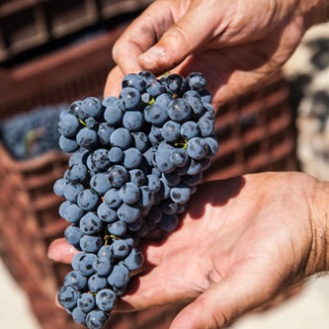
Agiorgitiko grapes and wines are steeped in legend
The altitude together with prevailing winds create a cooler climate than you might imagine for an inland area of Greece. Winters are quite cool here and there is ample rainfall in winter and spring. However, the summers are warm and sunny, the autumn is long enough for good ripening and the thin, gravelly soils provide good drainage so that the vines, at least on the slopes, do not have to struggle so much with mould, mildew and too much vigour. Agiorgitiko is the predominant grape variety and can make very intense, age-worthy wines. It is quite versatile and, depending on the soils and elevations, can vary in character and quality immensely. It tends to be tannic, spicy, lower in acidity and not always as fruit-forward in style as modern drinkers gravitate to. Winemakers need to balance the wine’s characteristics carefully so it is important to seek out the wineries that are pushing the quality boundaries as high as possible. Often this is those with higher elevation vineyards.
Where is Nemea?
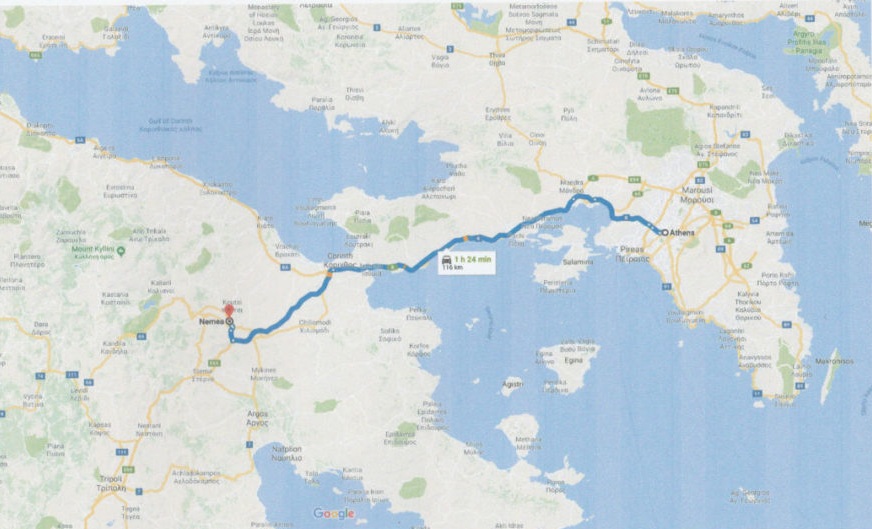
Nemea is located conveniently close to Athens and can even be visited on a day trip. It takes about 1.5 hours to get here by car from Athens, crossing the Corinth canal along the way. But don’t short change yourself – set aside some time to explore the Peloponnese. For many people the Peloponnese peninsula is one of the most attractive places in Greece and there is a tremendous amount to do and see in the immediate vicinity. Of course it has incredibly deep history and the ancient sites are plentiful and astounding. The villages and beaches are incredibly charming and the nearby town of Nafplio on the Argolic gulf is one of the most romantically beautiful seaside towns in all of Greece
Who Are The Winemakers?
The winemakers in the region range from multi-generational family operations to some of the most prominent young guns of modern Greek winemaking. So there is a tremendous mix of traditional knowledge and modern innovation. As is true everywhere in Greece, winemaking technology is being rapidly upgraded and wine styles evolving in a truly thrilling way. Here are a few of the many winemakers:
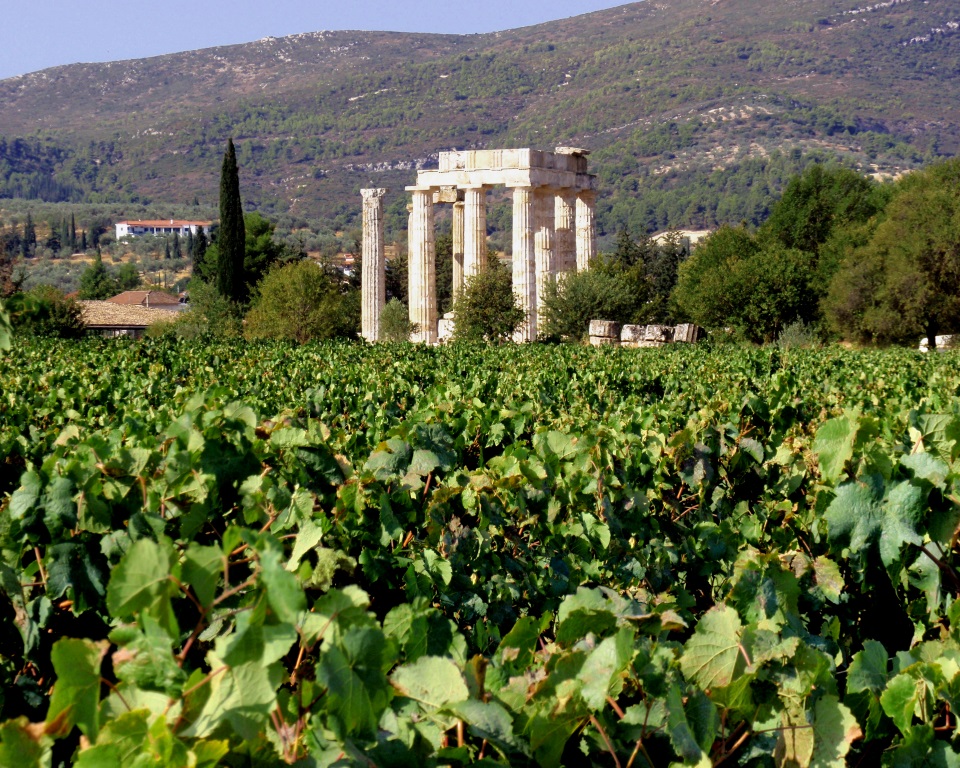 Temple of Zeus at Ktima Papaioannou estate
Temple of Zeus at Ktima Papaioannou estate
Ktima Driopi (Tselepos Estate)
Visiting Nemea And The Peloponnese
The region can be visited at any time of year but you will find that December to March are a bit chilly and July and August are more busy with tourists. A visit to the wine roads of Nemea will almost certainly be combined with time visiting Athens (check out the Attica wine region while you are there – you can read about it in our article on Attica). You should definitely visit the beautiful seaside town of Nafplio and if you have the time a road trip around the Peloponnese is an extremely memorable experience, with many little-known villages, beaches and historical sites to discover. Make sure to book your winery visits in advance if you can and expect fantastic Greek hospitality. Oh, and the food is pretty amazing as well (but that is a given in Greece!).
For a lux tour to the wineries around Athens or for guided tours elsewhere in Greece talk to my old friend Dennis Kokkotos at George’s Taxi – the Kokkotos family are an Athens institution!
And for a tremendous wealth of additional information on visiting Athens check out Matt Barrett’s fantastic Athens Survival Guide.
Useful Links:
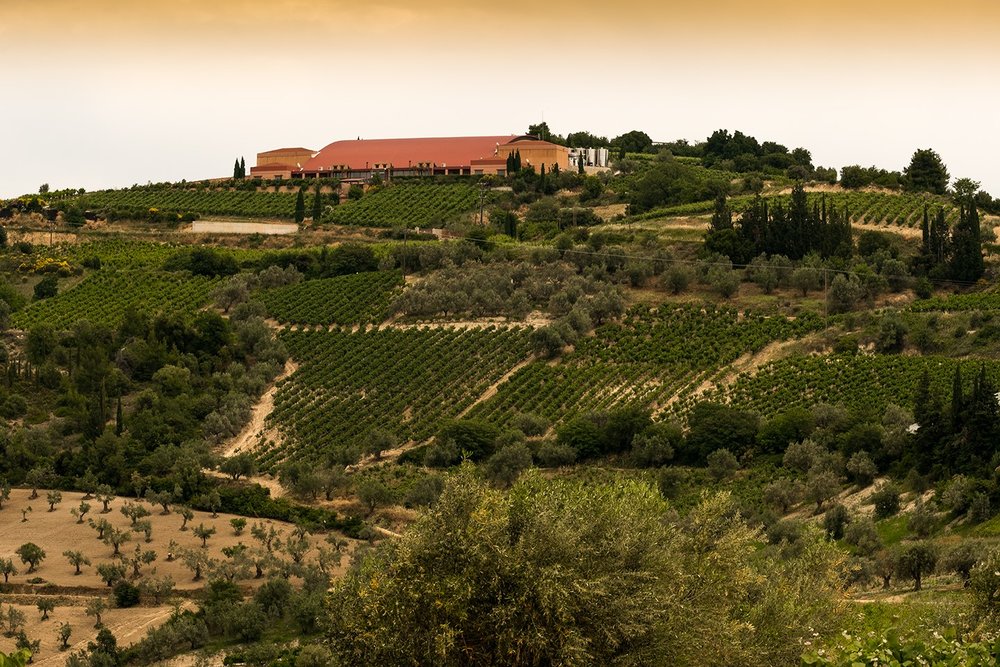 The Seméli Winery in Nemea produces Nemea PDO Agiorgitiko and also an impressive array of other wines
The Seméli Winery in Nemea produces Nemea PDO Agiorgitiko and also an impressive array of other wines
Map and photo credits: www.nemeawines.gr; Ktima Driopi; Ktima Papagioannou
